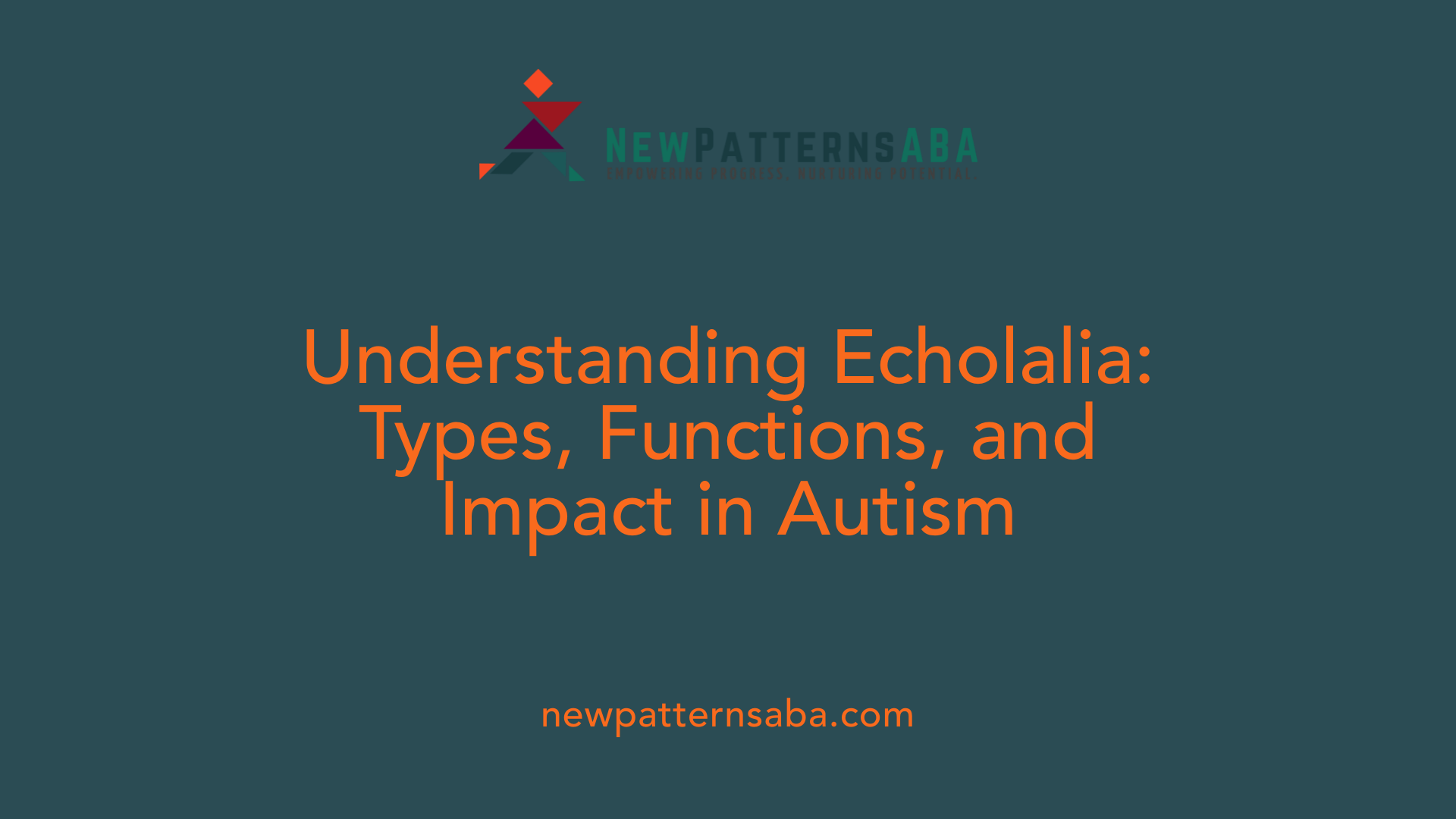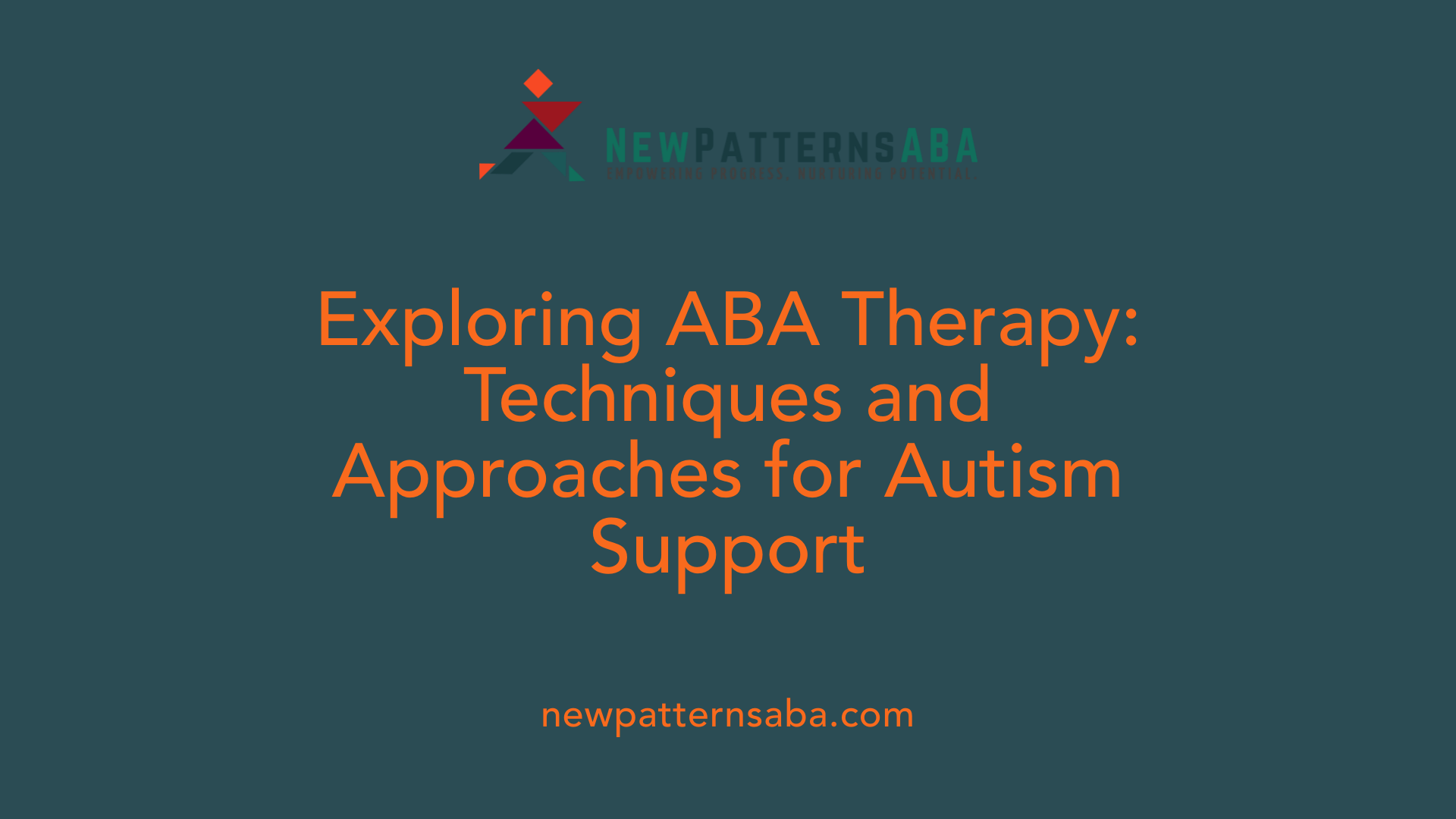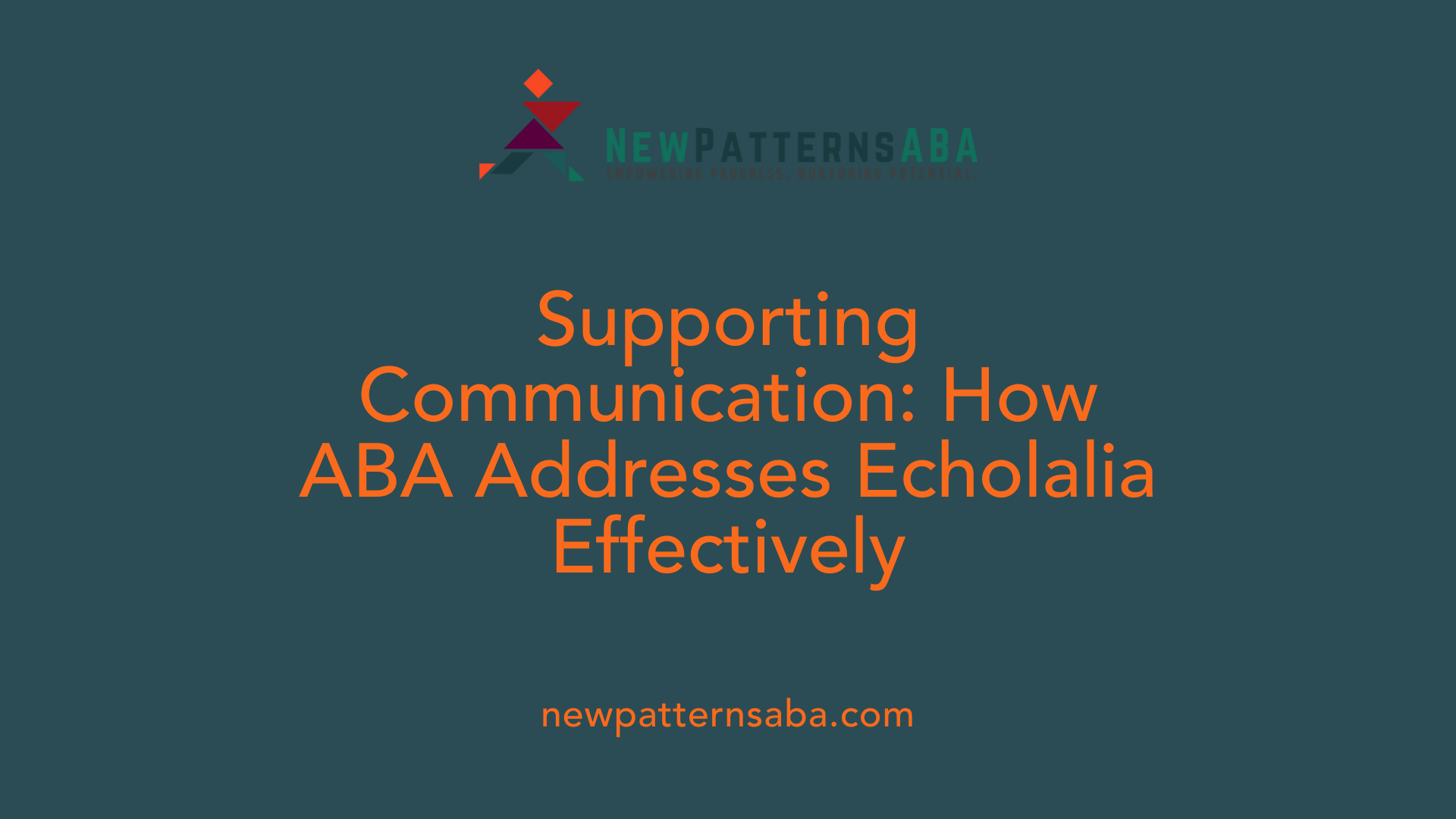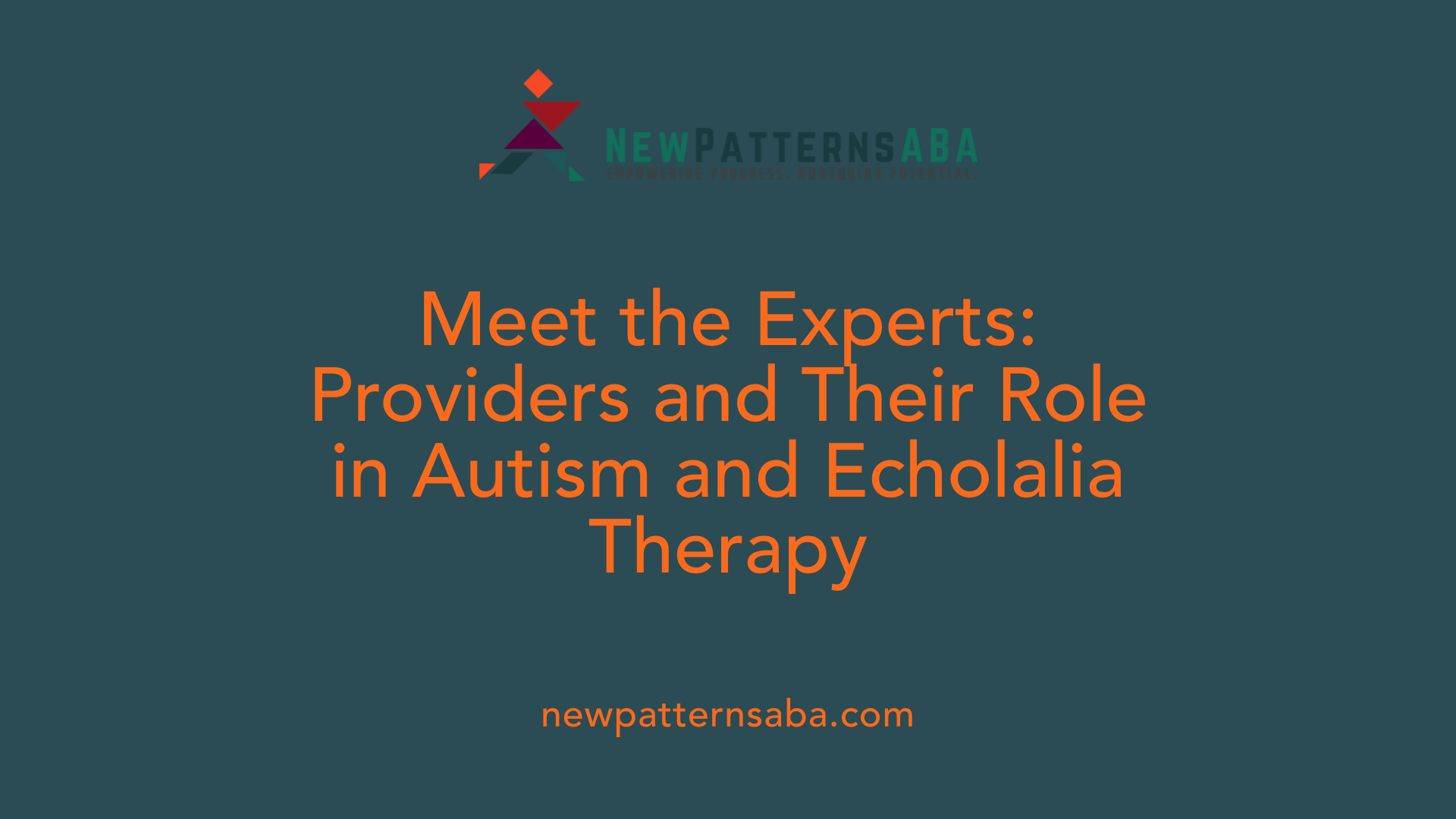Exploring the Role and Therapeutic Implications of Echolalia in Autism Spectrum Disorder
Why Understanding Echolalia Matters in Autism Therapy
Echolalia, often observed in children with autism spectrum disorder (ASD), involves the repetition of sounds, words, or phrases and serves multiple functions in communication. Far from being merely a repetitive behavior, echolalia can be a meaningful communicative strategy, providing insights into the individual's language development and cognitive processing. This article explores the various aspects of echolalia, its neurological underpinnings, and therapeutic interventions—particularly focusing on Applied Behavior Analysis (ABA) therapy—that support children with autism in harnessing echolalia as a tool for communication advancement.
Defining Echolalia and Its Functions in Autism

What is echolalia and how does it manifest in children with autism?
Echolalia is a communication behavior characterized by the repetition of one’s own or others’ utterances. In children with autism spectrum disorder (ASD), echolalia appears more frequently than in typical language development. It manifests mainly in two forms: immediate echolalia, where repetition happens within seconds of hearing a statement, and delayed echolalia, where repetition occurs minutes, hours, or even days later.
Types of echolalia
- Immediate Echolalia: Repeating words or phrases right after hearing them; often reflects the child's attempt to process and engage in conversation.
- Delayed Echolalia: Repeating phrases after some time has passed; may come from memorized language or past experiences and serve as a tool for communication or processing.
Functions of echolalia in autism
Echolalia serves several functions for autistic children, including:
- Communicative: Expressing needs, emotions, or social interaction intentions (e.g., signaling distress or enjoyment).
- Compensatory: Assisting in language processing when typical speech production is challenging.
- Self-stimulatory: Providing sensory or emotional regulation.
Not all echolalia is undesirable; some forms actually support social communication and language development.
Prevalence and communicative intent
Echolalia is highly prevalent in school-aged children with autism. Recent studies estimate that nearly all children with ASD who develop speech experience some form of echolalia. Importantly, echolalic utterances often carry communicative intent—they are not merely repetitions but purposeful attempts to interact, understand, or regulate emotional states.
Understanding echolalia as a meaningful communication strategy rather than a problem behavior guides interventions toward enhancing functional language rather than suppressing these vocalizations.
Neurological Foundations of Echolalia in Autism

Brain regions involved in echolalia
Echolalia in autism involves several key brain regions, including the Perisylvian Language Area, Supplementary Motor Area, Anterior Cingulate Cortex, and the mirror neuron system. These areas contribute to speech production, motor planning, attention, and social cognition, all critical in language processing and communication.
Right hemisphere lateralization and compensatory mechanisms
Research has identified a pattern of right hemisphere lateralization in individuals with autism who exhibit echolalia. This means that the right hemisphere's language areas are more active than usual, potentially as a compensatory response to atypical functioning or damage in the left hemisphere. This over-recruitment may underlie the repetitive speech seen in echolalia.
Role of mirror neuron system
The mirror neuron system, involved in imitation and understanding others' actions, plays a significant role in echolalia. Its activation during repeated speech suggests it facilitates the echoing behavior by mirroring heard utterances, aiding language learning but also contributing to repetitive vocalizations.
Implications for understanding communication in autism
Understanding the neurological basis of echolalia reveals that it is not merely a repetitive behavior but a functional communication strategy. The involvement of these brain regions underscores echolalia's role in processing and practicing language, highlighting its importance in social communication development in autistic children.
Applied Behavior Analysis (ABA) Therapy: An Overview

What is Applied Behavior Analysis (ABA) Therapy?
Applied Behavior Analysis (ABA) therapy is a scientifically validated behavior intervention used primarily for individuals with autism and other developmental disorders. ABA focuses on understanding behavior through the ABC model: Antecedent (what happens before a behavior), Behavior itself, and Consequence (what happens after). This framework helps therapists modify behavior by reinforcing desired actions and reducing challenging ones.
ABA aims to enhance key skills such as communication, social interaction, and self-care while decreasing problematic behaviors. Interventions are individualized by qualified practitioners, often Board Certified Behavior Analysts (BCBAs), who tailor strategies based on detailed assessments. This personalized approach ensures therapy addresses unique strengths and challenges of each child.
Principles and Techniques of ABA Therapy
Central techniques in ABA include positive reinforcement—rewarding appropriate behaviors to increase their occurrence. Therapists also employ prompting, which involves cues or assistance to encourage desired responses, combined with fading strategies to gradually reduce support and foster independence.
Other strategies include cue-pause-point training and script training, which help children transition from echolalic speech toward functional communication. Visual supports and modeling provide clear, tangible examples, making learning accessible and motivating for children.
Different Approaches Within ABA
ABA is not one-size-fits-all; it incorporates various methods such as:
- Discrete Trial Training (DTT): Breaks skills into small, teachable components in structured sessions.
- Pivotal Response Treatment (PRT): Focuses on pivotal areas like motivation and responsiveness to multiple cues.
- Early Start Denver Model (ESDM): Integrates behavioral and developmental principles for young children in natural settings.
- Natural Environment Teaching (NET): Uses everyday situations to promote spontaneous communication.
These approaches emphasize generalization—applying skills across environments—and often involve families to reinforce learning at home and school.
Evidence Base
Extensive research supports ABA's effectiveness, especially when started early and applied consistently. It has shown meaningful improvements in communication, social interaction, and adaptive behaviors, making it a cornerstone in autism therapy. Specialized interventions within ABA have also been used successfully to address echolalia by shaping more functional language use.
Together, these features establish ABA therapy as a comprehensive, evidence-based framework promoting meaningful developmental progress in children with autism.
Utilizing ABA Therapy to Support Individuals with Echolalia

How is ABA therapy used to support individuals with autism?
ABA therapy (Applied Behavior Analysis) is a structured, evidence-based approach designed to promote positive behaviors and reduce challenges in individuals with autism spectrum disorder (ASD). It targets specific skills, such as communication and social interaction, by using techniques like positive reinforcement, discrete trial training, and naturalistic teaching strategies. Board Certified Behavior Analysts (BCBAs) craft individualized programs that involve analyzing environmental factors—like antecedents and consequences—to understand what triggers behaviors such as echolalia and how best to respond.
How does ABA conduct functional behavior analysis of echolalia?
Functional behavior analysis (FBA) in ABA therapy examines the context and purpose of echolalic utterances, identifying whether they serve communicative, self-stimulatory, or compensatory functions. This evaluation includes observing speech prosody, gaze, body orientation, and surrounding environmental cues. Understanding the function helps therapists tailor interventions that respect echolalia as a communication strategy rather than simply attempting to eliminate it.
What behavioral interventions reduce echolalia?
ABA employs several evidence-based behavioral techniques shown to reduce echolalia in autistic children. These include:
- Cue-Pause-Point Training: Encourages waiting for a response and providing prompts when necessary.
- Script Training: Uses repeated practice of functional phrases to replace echolalic repetitions.
- Differential Reinforcement: Rewards alternative appropriate communication methods.
- Tact Modeling: Teaches naming and labeling objects or events to encourage spontaneous speech.
These approaches help children transition from repetitive echoing to purposeful communication.
What naturalistic strategies expand communication?
Naturalistic teaching focuses on integrating communication goals into daily routines and social interactions. By responding to echolalic utterances with appropriate, expandable language models and teaching useful phrases such as "I don’t know," therapists guide children toward more functional and spontaneous language use.
How do visual aids and prompt fading support communication?
Visual supports like picture exchange systems (PECS) and sign language, combined with prompt fading techniques, encourage children to produce meaningful requests and expressions. Gradually reducing prompts fosters independence while positive reinforcement motivates sustained engagement. These strategies facilitate the gradual replacement of echolalia with functional communication skills.
Together, these ABA methods provide a comprehensive framework for supporting children with echolalia, recognizing its communicative value and fostering language development toward spontaneous, meaningful speech.
Who Provides ABA Therapy and Their Role in Echolalia Intervention

Qualifications of ABA Providers
ABA therapy for echolalia and autism intervention is primarily delivered by licensed professionals with specialized training. Board Certified Behavior Analysts (BCBAs) hold advanced credentials and are responsible for conducting assessments, developing individualized treatment plans, and supervising therapy. Registered Behavior Technicians (RBTs) provide direct therapy sessions, implementing the strategies designed by BCBAs while adhering to ethical standards.
Role of BCBAs and Registered Behavior Technicians
BCBAs oversee the evaluation of echolalia's function in each child, guiding tailored interventions that incorporate techniques such as cue-pause-point training and script modeling to promote functional communication. RBTs work closely with children during therapy sessions, applying behavioral methods under the supervision of BCBAs to help reduce echolalia and increase purposeful speech.
Settings Where ABA Is Delivered
ABA services occur across various environments including autism intervention centers, clinics, and educational institutions. Home-based therapy and community settings are common to foster generalization of skills in everyday contexts. This flexible delivery enhances the relevance and effectiveness of interventions.
Importance of Family Involvement and Generalization of Skills
Family members play a vital role in extending the gains made in therapy into daily life. Therapists collaborate with families to incorporate visual aids, routines, and reinforcement strategies at home. This partnership ensures that communication skills taught during ABA sessions generalize across environments, maximizing the child's social engagement and independence.
Balancing Intervention: Recognizing Echolalia’s Functional Communication
Echolalia as a communicative and developmental tool
Echolalia, the repetition of vocalizations or utterances, serves important communicative and developmental roles for many autistic children. It is not simply repetitive speech but often functions as a way to process language, express needs, or support social interaction. Both immediate and delayed echolalia can reflect purposeful communication that helps these children practice language and participate in conversations.
Risks of treating echolalia as a problem
Treating echolalia solely as a problematic behavior risks overlooking its communicative value. Approaches aiming to eliminate echolalia without understanding its function can harm social and communication development. Recognizing echolalia as a functional strategy supports more respectful, effective interventions that nurture natural language growth.
Tools for assessing communication abilities
Before designing interventions, professionals use assessment tools like the VB-MAPP (Verbal Behavior Milestones Assessment and Placement Program) and ABLLS (Assessment of Basic Language and Learning Skills) to evaluate a child’s communication strengths and challenges. This foundation enables tailored strategies that respect individual needs and the purposes echolalia serves.
Strategies for responding to echolalia functionally
Effective responses to echolalia include modeling appropriate, expandable language and teaching useful phrases such as "I don’t know." Naturalistic strategies like visual aids, prompt fading, and reinforcing non-echolalic speech encourage the development of functional communication. Systems such as PECS and sign language provide additional purposeful communication options.
Importance of parent involvement and ongoing progress monitoring
Engaging parents in therapy ensures that communication strategies extend beyond clinical settings into everyday life. Using routines, visual supports, and reinforcement at home strengthens language development. Continuous monitoring of echolalic utterances over time guides adjustments to interventions, maximizing progress and supporting each child's evolving communication journey.
Integrating Understanding and Intervention for Echolalia in Autism
Echolalia is an intrinsic and complex communication behavior in children with autism, reflecting both underlying neurological processes and developmental stages of language acquisition. Recognizing its functions rather than viewing it solely as a problem behavior is essential for crafting effective, evidence-based interventions. Applied Behavior Analysis therapy stands as a cornerstone approach, offering individualized strategies that encourage children to transition from repetitive utterances toward spontaneous, purposeful communication. Collaboration among trained professionals, therapists, families, and educators ensures that interventions are tailored and reinforced across settings. Ultimately, embracing echolalia’s communicative potential enables children with autism to develop meaningful social connections and greater independence.
References
- A systematic review of interventions for echolalia in autistic ...
- Echolalia from a transdiagnostic perspective - PMC
- Tips and Strategies for Echolalia as Communicative Intent
- Repeating purposefully: Empowering educators with ...
- Language Development in ABA Therapy in Alpharetta
- Echolalia and Autism: A Window into Unique Minds
- How ABA Therapy Addresses Echolalia In Children
- Applied Behavior Analysis (ABA)
- Applied Behavior Analysis (ABA)
- 6 Benefits of ABA Therapy for Children with Autism






